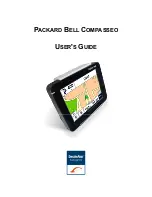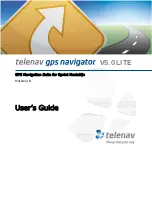
GPS-20 Operating Manual
Rikaline
Rikaline
Marketing Corp.
5F-1, 125, Roosevelt Road, Sec. 5, Taipei, Taiwan 116
Tel: ++886 2 2934 5456 Fax: ++886 2 2934 4373 E-Mail:
web:
www.rikaline.com.tw
5
1.3.5.3 DGPS Protocol
Real-time Differential Correction input (RTCM SC-104 version 2.00 message types 1, 5 and 9).
2. Operational characteristics
2.1 Initialization
As soon as the initial self-test is complete, the GPS-20 begins the process of satellite acquisition and
tracking automatically. Under normal circumstances, it takes approximately 45 seconds to achieve a position
fix, 38 seconds if ephemeris data is known. After a position fix has been calculated, information about valid
position, velocity and time is transmitted over the output channel.
The GPS-20 utilizes initial data, such as last stored position, date, time and satellite orbital data, to
achieve maximum acquisition performance. If significant inaccuracy exists in the initial data, or the orbital
data is obsolete, it may take more time to achieve a navigation solution. The GPS-20 Auto-locate feature is
capable of automatically determining a navigation solution without intervention from the host system.
However, acquisition performance can be improved when the host system initializes the GPS-20 in the
following situation:
1) Moving further than 500 kilometers.
2) Failure of data storage due to the inactive internal memory battery.
2.2 Navigation
After the acquisition process is complete, the GPS-20 sends valid navigation information over
output channels. These data include:
1) Latitude/longitude/altitude
2) Velocity
3) Date/time
4) Error
estimates
5) Satellite and receiver status
The GPS-20 sets the default of auto-searching for real-time differential corrections in RTCM SC-104
standard format, with the message types 1, 5, or 9. It accomplishes the satellite data to generate a differential
(DGPS) solution. The host system, at its option, may also command the GPS-20 to output a position
whenever a differential solution is available.



































